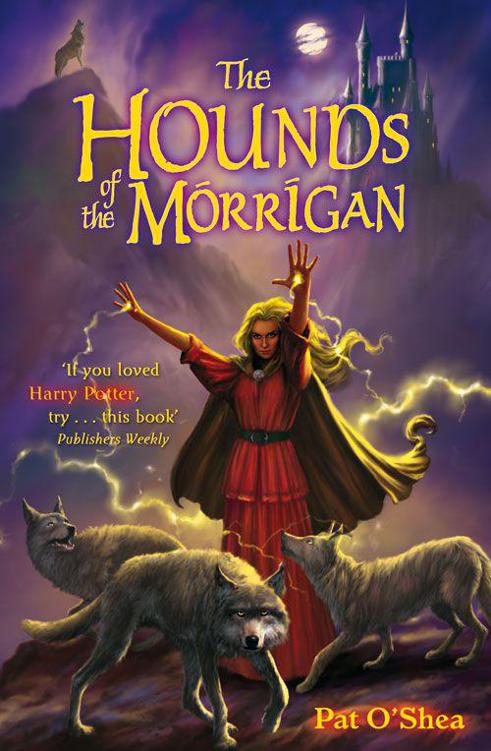
The Hounds of the Morrigan PDF
Preview The Hounds of the Morrigan
O'Shea makes her debut in this book that one wishes would go on past its spellbinding length, almost 500 pages. Although the writing took 10 years, sure it reads as if it were no trouble at all, at all for the author. As have many of her fellow native Irish storytellers, she finds inspiration in the island's legendary heroes. But her uproariously funny, scarely, suspenseful fairy tale is entirely original. The enchantment begins at once as two evil spirits fly to Galway to await The Morrigan, Great Queen: "All the time invisible; except once, when they swooped down on a basking shark and frightened it silly. . . All the time silent; except when they tapped their teeth with their finger-nails and sent lightning. . . ." In the city, the spirits become two strange women on a motorbike, followed by their hounds. "All this because a boy was about to buy a book in the second-hand bookshop, in the small grey city." The boy is Patrick Joseph (Pidge), urged by something he doesn't understand to own the ancient, tattered pages; it looks very boring. But he takes "A Book of Patrick's Writing" home and it throws him, as well as his five-year-old sister Brigit, into the war on the side of noble Cuchulain against wicked Morrigan. Moving into the house near to the children, the demonic females fail again and again to steal the miraculous volume. Pidge and Brigit escape by a hair's breadth from each deadly trapat times saved by fairies in the guise of tinkers, frequently by the mischief created by silver-tongued Brigit, a genius at telling lies that frustrate the foe. All the while, Cuchulain's valiant army and The Morrigan's forces are rushing to a decisive battle. In an astonishing finale, O'Shea describes a lyrical moment when Pidge and Brigit try to remember who has left gifts for them . . . and why.
Copyright 1986 Reed Business Information, Inc.
Grade 5-8 After he unwittingly releases an evil force long imprisoned in an old Irish manuscript, Pidge and his little sister, Brigit, are drawn into a series of adventures to help the good god, the Dagda, destroy this evil before it is found and used against the world by the Morrigan, Celtic tripartite goddess of battle. The Morrigan, in both hilarious and terrifying personae, is seen mostly in mod guise as a pair of motorcycle-riding hags, who set up a command post in Galway to observe and meddle with the action. (In one terrific touch, their fingerprint, suspended in air, becomes elsewhere a maze to entrap the children.) Their mean sense of humor lets them create a "watch frog" (who speaks in bog-Irish malapropisms); comb their blue and red hair with a live hedgehog; and make chess moves by sticking pins into chess pieces given temporary life. And constantly, their shape-changing, flick-tongued, slyand dominatedhounds track the children, but they may not kill unless they see their quarry run. The unfolding quest baffles and challenges the pair as it will readers, as shapes shift and dreams take on independent life. The writing is wonderful, but inventive to distraction; one can lose track of names and allusions to earlier events as episodes multiply, and some of the episodes seem superfluous. (The glossary is for traditional material only.) Large collections should have this book, by a new Irish writer, and those libraries with dedicated readers of fantasy should try it. Ruth M. McConnell, San Antonio Public Library
Copyright 1986 Reed Business Information, Inc.
